A Great War Q-ship operations D.S.M. awarded to Engine-Room Artificer 1st Class J. C. Esdon, Royal Naval Reserve, who was decorated for his gallant deeds in the ‘splendid Penshurst’ in her action with an enemy submarine on 19 August 1917; having then survived the famous Q-ship’s loss in December 1917, he was among those killed when the sloop Anchusa was torpedoed off Ireland in July 1918 Distinguished Service Medal, G.V.R. (E.A.1824. J. C. Edson, E.R.A. 1Cl. R.N.R. Atlantic Ocean. 19 Aug. 1917.) good very fine £700-£900 --- Importation Duty This lot is subject to importation duty of 5% on the hammer price unless exported outside the UK --- --- Provenance: Dix Noonan Webb, December 2000. D.S.M. London Gazette 2 November 1917: ‘For services in action with enemy submarines.’ The original recommendation for Penshurst’s attack on a German submarine on 19 August 1917 states: ‘This rating particularly rendered conspicuous service in keeping the engines going, connecting up steering gear to the main steering engine, pumping out water, repairing the pumps when they became choked and broke down, being continuously on watch from the time the torpedo struck until the ship arrived in port.’ John Charles Esdon was born in Liverpool on 16 October 1891, and joined the Royal Naval Reserve as an Engine Room Artificer in May 1915. Having then served in the mine-sweeping sloop Larkspur until July 1917, he volunteered for decoy ships and joined the Penshurst (Q. 7). Just three weeks later, on 19 August 1917, under the command of Lieutenant Cedric Naylor, D.S.O., D.S.C., R.N.R, he was present in her classic decoy ship action with the UC-72, which action led to the award of his D.S.M. Badly damaged by a torpedo strike below her bridge, and with her hidden guns prematurely exposed, the Penshurst nonetheless pretended to ‘run away’ when the enemy submarine surfaced. She then opened fire with her 3-pounder gun in an attempt to entice the submarine closer before opening up with her heavier guns. Penshurst also used her 12-pounder with good effect and hit UC-72 four times, causing her to break off the action and dive. Penshurst, in her damaged state, was unable to follow up with depth charges and so set course for Plymouth and much needed repairs. Esdon was subsequently present on the occasion of Penshurst’s loss in the Irish Sea on 24 December 1917, when she was torpedoed by the U-110. Owing to the Q-ship’s heavy list, her guns were limited in their capability to return fire, but she managed to get in two hits before slipping beneath the waves. Remarkably, in the circumstances, all but two of the ‘Splendid Penshurst’s’ crew were rescued. Advanced to Chief Engine Room Artificer, Esdon next joined the sloop Anchusa, and he was likewise employed at the time of her loss to the U-54 off Ireland on 14 July 1918. On passage to Loch Swilly, she was struck by two torpedoes on her starboard side, broke up and sank rapidly, going down in just two minutes. Twelve survivors were picked up the following morning but he was not among them. The son of Catherine Esdon, of Cato Street, Southwick, Sunderland, and the late John Esdon, he has no known grave and is commemorated on the Chatham Naval Memorial.
Auctioneer's Buyers Premium: 24% (+VAT)
There is an additional charge of 4.95% (+VAT/sales tax)
See Full Terms And Conditions





